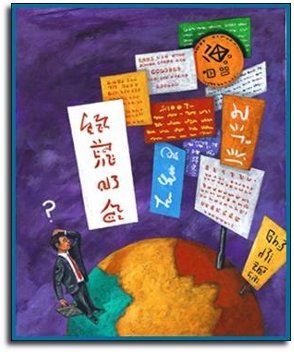The art of localization

There’s an old adage in international marketing circles that says to go global, businesses really have to think local.
Apple recently launched its ubiquitously popular iPhone in China and after more than two months, it had shifted a mere 5,000 handsets. Whilst it is a product that will be unaffordable to many people in China, in a country of more than one billion people, most conservative forecasts of iPhone’s two-month sales figures prior to launch would be at least fifty times that.
Apple failed to consider a number of factors when launching the iPhone, namely Chinese consumers prefer not to sign long-term contracts, opting for charge cards instead, allowing a greater degree of flexibility for the user. This isn’t the only reason it hasn’t taken off, but it’s a factor that Apple really should have considered prior to launch – they should’ve properly researched the market.
At a micro level, it’s easier than ever for the smallest of home-built businesses to network and trade on the international arena. But the first step towards doing so is to build a fully localized presence in your key target markets– and the process begins with adapting your company website for each country you plan to tap into.
Like Apple should’ve done with the iPhone, you need to fully understand your target country, know what excites them and what, ultimately, is likely to encourage them to part with their hard-earned cash.
 The only way businesses should communicate with their international markets is in the native language of the local consumers. Even though English is the most commonly spoken second language in the world, the fact remains that people prefer to communicate in their mother tongue. Furthermore, three quarters of the world’s population speak no English whatsoever.
The only way businesses should communicate with their international markets is in the native language of the local consumers. Even though English is the most commonly spoken second language in the world, the fact remains that people prefer to communicate in their mother tongue. Furthermore, three quarters of the world’s population speak no English whatsoever.
Contrary to what many people think, fluency in a particular language doesn’t qualify someone to translate into it. To provide convincing translations, the translator requires first-hand knowledge of the culture of that language which is why most translators will only ever work INTO their native tongue from another language in which they are fluent.
Furthermore, many linguists will specialize in a particular subject – such as marketing, engineering or agriculture. If your company’s products or services involve highly technical terminology, you will probably want to consider checking with the translation company that they have suitable candidates with the right level of experience.
The important thing to remember when translating your website or any other marketing material is that what works in one country, might not translate the way you want it to in another. What’s clever and witty in one country, might be offensive in another. This is something only a native-speaking translator will know.
It’s also important to be wary of dialects within languages. If you translate your website into French, it doesn’t mean you can use it for all French-speaking countries.
In France, a ‘post-office box’ is a boîte postale, but in Belgium and Switzerland it’s a case postale. In France, ‘lunch’ is déjeuner, but in Belgium and Switzerland the word for ‘lunch’ is dîner which, incidentally, is the word for ‘evening meal’ in France. There is a whole host of linguistic nuances between the French, German and Portuguese dialects of the world. Even closer to home, the English in the US and the English in the UK are significantly different…not to the point of requiring an entirely different website, but certainly to the point of requiring significant care and attention when writing the English text.
When marketing internationally, the words ‘language’ and ‘local’ should always go hand-in-hand. Failing to do so can lead to a very costly global venture for businesses where funds may be limited.
About the Author
Article by Christian Arno, the Managing Director of Lingo24.
Visit Christian’s website at www.lingo24.com.







